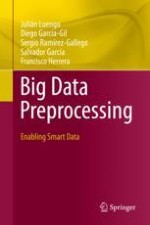2020 | OriginalPaper | Buchkapitel
5. Data Reduction for Big Data
verfasst von : Julián Luengo, Diego García-Gil, Sergio Ramírez-Gallego, Salvador García, Francisco Herrera
Erschienen in: Big Data Preprocessing
Aktivieren Sie unsere intelligente Suche, um passende Fachinhalte oder Patente zu finden.
Wählen Sie Textabschnitte aus um mit Künstlicher Intelligenz passenden Patente zu finden. powered by
Markieren Sie Textabschnitte, um KI-gestützt weitere passende Inhalte zu finden. powered by
